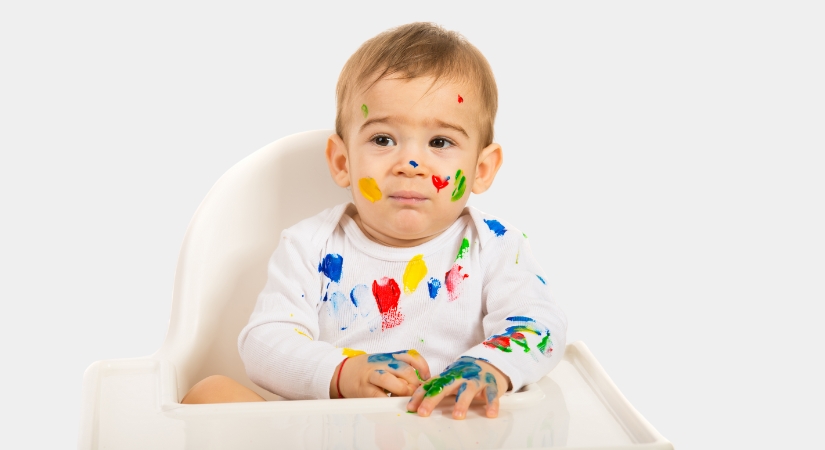Messy play is a cornerstone of early childhood education, providing children with hands-on, sensory-rich experiences that foster creativity, exploration, and learning. In this blog, we’ll explore five exciting messy play activities perfect for early years settings.
1. Shaving Foam Exploration
Children love the fluffy, soft texture of shaving foam, making it an ideal sensory activity.
Equipment:
- Shaving foam
- Food colouring (optional)
- Large tray
- Aprons
How to:
- Spray shaving foam onto a large tray.
- Mix in a few drops of food colouring for added interest.
- Provide aprons for children and encourage them to dive in and explore freely.
Developmental Benefits:
- Enhances fine motor skills: Manipulating the foam with fingers and hands strengthens the small muscles in the hands and wrists, essential for tasks like writing, cutting, and buttoning clothes.
- Encourages sensory exploration: The unique texture, smell, and even sound of the foam engage children’s senses, helping them process and respond to different sensory inputs more effectively.
- Stimulates creativity and imagination: The open-ended nature of foam play allows children to create shapes, patterns, and scenes, encouraging imaginative thinking and self-expression through tactile art.
2.Cloud Dough Exploration
Cloud dough offers a soft, moldable texture, perfect for sensory and creative play.
Equipment:
- Flour
- Vegetable oil
- Large sensory tray
- Moulds, cups, spoons
- Aprons
How to:
- Mix 8 cups of flour with 1 cup of vegetable oil until crumbly and moldable.
- Place cloud dough into a sensory tray.
- Provide moulds, cups, and spoons for imaginative play and exploration.
Developmental Benefits:
- Encourages fine motor skill development: Scooping, pinching, and moulding the dough strengthens hand and finger muscles, which supports later skills like pencil control and self-care tasks.
- Stimulates tactile sensory exploration: The soft, crumbly texture of cloud dough provides a rich sensory experience that helps children become more comfortable with different sensations and textures.
- Fosters creativity and imaginative play: With tools and moulds, children can invent scenarios, build structures, and engage in pretend play, which supports cognitive flexibility and storytelling skills.
3.Finger Painting
A classic art activity that engages children’s senses while sparking creativity.
Equipment:
- Finger paints
- Large paper or card
- Aprons or old clothes
How to:
- Spread large sheets of paper on tables or the floor.
- Provide several colours of finger paint in accessible containers.
- Allow children to freely explore painting with their fingers and hands.
Developmental Benefits:
- Strengthens fine motor skills: Moving fingers through paint and making intentional marks helps build the dexterity and coordination needed for writing, drawing, and manipulating small objects.
- Encourages self-expression and creativity: Finger painting offers a non-verbal outlet for children to express their thoughts, feelings, and ideas through colours and shapes, nurturing emotional development and creative confidence.
- Aids colour recognition and sensory development: Using a variety of paints allows children to learn and differentiate colours while also engaging their sense of touch, which supports sensory integration and cognitive growth.
4.Sand and Water Sensory Bin
Mixing sand and water provides a rich, tactile experience that promotes learning through sensory play.
Equipment:
- Sand
- Water
- Large sensory bin or tray
- Scoops, funnels, cups
How to:
- Fill a large bin with sand, then gradually add water.
- Include cups, funnels, and scoops to enhance interaction.
- Invite children to explore and experiment with textures and measurements.
Developmental Benefits:
- Encourages scientific thinking and problem-solving: As children experiment with pouring, mixing, and observing changes in texture, they engage in early scientific exploration—forming hypotheses, testing ideas, and drawing conclusions.
- Supports mathematical understanding (volume, measurement): Using scoops, cups, and funnels introduces concepts like more/less, full/empty, and comparisons in size, which lay the groundwork for numeracy skills.
- Strengthens sensory processing skills: The combination of wet and dry textures helps children refine their ability to interpret and respond to sensory input, supporting focus, regulation, and comfort with new experiences.
5.Spaghetti Play
Cooked spaghetti offers a fun and squishy texture that’s perfect for exploring.
Equipment:
- Cooked spaghetti
- Large bowl or tray
- Food colouring (optional)
- Aprons
How to:
- Cook spaghetti and allow it to cool.
- Add food colouring for an engaging visual experience.
- Place the spaghetti in trays or bowls for children to handle and explore.
Developmental Benefits:
- Enhances tactile sensory exploration: The unique, slippery texture of spaghetti encourages children to use their sense of touch to explore and become more comfortable with unfamiliar sensations, which supports overall sensory development.
- Supports fine motor skill development: Picking up, pulling apart, and squishing spaghetti helps strengthen finger muscles and coordination, which are essential for tasks like writing and buttoning.
- Promotes imaginative and exploratory play: The open-ended nature of the activity allows children to use the spaghetti in creative ways—pretending it’s hair, worms, or even spaghetti monsters—encouraging storytelling and creative thinking.
Conclusion
Messy play is more than just fun, it’s essential to children’s holistic development, enhancing sensory, motor, social, and cognitive skills. They’re also great moments to capture and send home to parents! Discover how eyworks can support your nursery by providing insightful observations, easy reporting, and seamless communication.
